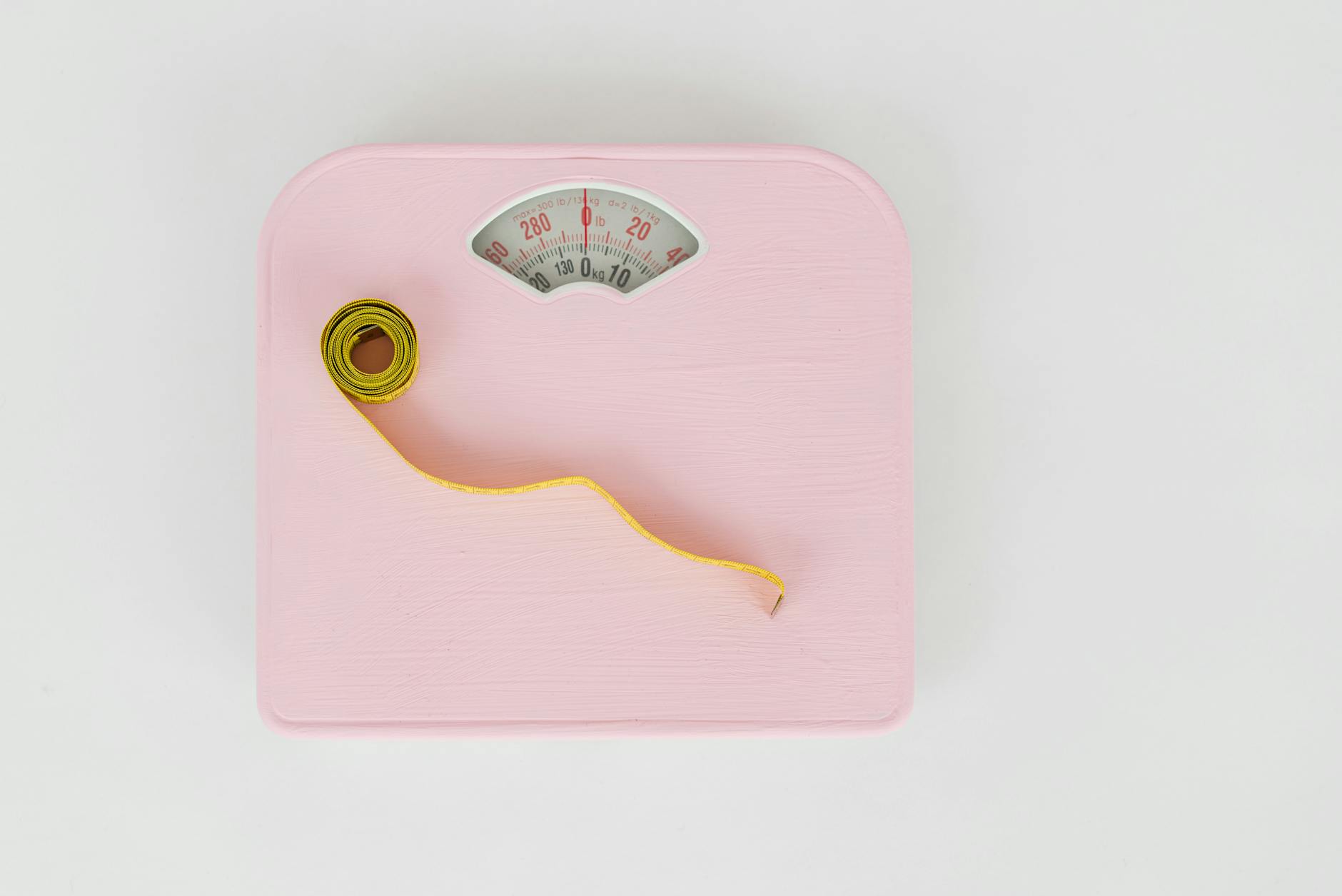You’ve been counting calories, hitting the gym, and sticking to your plan—yet the scale won’t budge. Sound familiar? Weight loss isn’t always a straight line, and sometimes even the most disciplined efforts hit roadblocks.
While plateaus are normal, certain red flags signal your current approach isn’t working. The good news? Recognizing these signs early lets you course-correct before frustration sets in. Here’s how to spot them and tweak your strategy for better results.
Signs Your Weight Loss Plan Isn’t Working
Sticking to a diet or workout routine only to see no results feels defeating. If your progress stalls or backfires, these red flags suggest it’s time for a change—not just more willpower.
The Scale Doesn’t Budge
A stubborn scale doesn’t always mean failure. Water retention from high sodium intake, new exercise routines, or hormonal shifts can mask fat loss. Muscle gain also adds weight—measure progress with tape or clothing fit instead. Extreme calorie cuts may slow your metabolism, making future loss harder.
You Feel Tired All the Time
Crashing halfway through the day? Severe calorie deficits drain energy. Missing key nutrients like iron or B vitamins worsens fatigue, leaving you too drained for workouts. If coffee becomes a crutch, reassess your intake. Sustainable plans fuel activity, not sap it.
Constant Hunger or Cravings
Skipping meals or banning food groups often leads to obsessive thoughts about eating. Restrictions trigger cravings, making moderation harder. If you’re dreaming of pizza by day three, your plan might be too rigid. Balanced meals with protein and fiber curb hunger naturally.
No Changes in Body Composition
The scale can lie. If your jeans feel looser but weight stays the same, you’re likely losing fat and gaining muscle—a win! Body recomposition takes time. Focus on strength gains and how clothes fit, not just pounds lost.
Your Mood and Motivation Plummet
Grumpy, impatient, or irritable? Severe diets strain mental health. Constant deprivation chips away at willpower, making quit-lit candles more tempting than dumbbells. If your plan feels punishing, it probably is. Adjust before burnout wins.
Tuning into these signs helps you pivot before frustration derails progress entirely. The fix isn’t working harder—it’s working smarter.
When It’s Time to Adjust Your Approach
Hitting a weight loss plateau doesn’t mean failure—it means your body is asking for a different strategy. Small, intentional changes can kickstart progress again. Here’s how to tweak your plan without starting from scratch.

Photo by SHVETS production
Reassess Your Caloric Intake
If the scale isn’t moving, your calorie needs may have shifted. Weight loss changes your metabolism—what worked initially might now be too much (or too little). Use an online TDEE calculator for your current weight. Eating too little slows metabolism and can lead to muscle loss. Aim for a modest deficit, like 200-300 calories under maintenance, to keep energy stable.
Here’s what to watch for:
- Undereating signs: Constant fatigue, hair thinning, feeling cold.
- Overshooting calories: Sneaky snacks or liquid calories adding up.
Reevaluate Your Macronutrients
Not all calories fuel your body the same way. Protein keeps you full and preserves muscle, while carbs and fats power workouts and hormone balance. If hunger or energy crashes are an issue, try adjusting ratios:
- Too low protein? Aim for 0.7-1g per pound of body weight.
- Low-fat diets? Healthy fats like avocado and nuts support hormone production.
- Carbs for energy: Active bodies need them—especially around workouts.
Incorporate Strength Training
Cardio burns calories, but lifting weights builds metabolism-boosting muscle. Muscle burns more calories at rest than fat, even when you’re not active. Start with two sessions weekly, focusing on compound moves like squats and push-ups. No gym? Bodyweight exercises or resistance bands work.
Prioritize Sleep and Stress Management
Poor sleep and high cortisol tell your body to store fat. If you’re doing everything right but still stuck, check these areas:
- Sleep hygiene: Aim for 7-9 hours. Dim screens an hour before bed.
- Stress hacks: Daily walks, deep breathing, or even 10 minutes of stretching help.
Seek Professional Guidance
Sometimes DIY adjustments aren’t enough. A dietitian can spot hidden gaps in your nutrition, while a trainer tailors workouts to your body. If you’ve tried everything and still struggle, investing in expert advice saves time and frustration.
Adjusting doesn’t mean starting over—it’s about refining what’s already working. Small pivots lead to big results.
Common Mistakes That Slow Progress
Even the most dedicated weight loss plans can hit snags—not because of effort, but because of subtle missteps that drain results. You might be working hard, but small habits could be quietly working against you. Identifying these roadblocks early helps you shift from spinning your wheels to moving forward.
Focusing Only on the Scale
The scale is just one tool, not the whole story. Water weight, muscle gain, and even digestion can make the numbers swing like a pendulum. Obsessing over daily weigh-ins can turn motivation into frustration.
Success markers worth tracking instead:
- Energy levels: Do workouts feel easier? Can you climb stairs without gasping?
- Strength gains: Lifting heavier weights or doing more reps signals progress.
- Measurements: Inches lost often show up before pounds.

Photo by SHVETS production
Following Fad Diets
Juice cleanses, carb-free promises, or “lose 10 pounds in a week” plans often backfire. They might deliver short-term drops, but they’re built on extremes—not sustainability. Deprivation leads to rebound eating, leaving you worse off than before.
Red flags of a fad diet:
- Eliminates entire food groups (no carbs, no fats, etc.).
- Requires strict rules with zero flexibility.
- Promises rapid weight loss without exercise.
Instead, aim for balance. A diet you can maintain for months—not days—is the only one that works long-term.
Ignoring Rest Days
Pushing through fatigue might feel heroic, but overtraining strains your body. Stress hormones like cortisol rise, slowing fat loss and sapping energy. Muscle repairs and grows during rest, not during workouts.
Signs you need more recovery:
- Soreness lasts more than 48 hours.
- Workouts feel harder despite consistent effort.
- Sleep quality drops or fatigue lingers.
Schedule rest days like workouts. Active recovery—like walking or yoga—keeps you moving without overloading your system.
How to Create a Sustainable Weight Loss Plan
Sustainable weight loss isn’t about quick fixes or perfect discipline—it’s about designing a plan that fits your life. When progress stalls, the answer isn’t stricter rules, but smarter habits. Build a strategy that fuels both your body and motivation.

Photo by Karolina Grabowska
Set Realistic Goals
Big ambitions can backfire. Aiming to lose 20 pounds in a month sets you up for frustration, not success. Instead, break it down. Smaller targets—like 1-2 pounds per week—add up over time without draining your willpower.
Key tips for goal-setting:
- Focus on behavior, not just outcomes. Commit to daily walks or adding vegetables to meals.
- Avoid “all or nothing” thinking. Missing one workout doesn’t undo progress.
- Celebrate milestones. Lost 5 pounds? That’s a win worth acknowledging.
Realistic goals keep you moving forward, even when motivation wavers.
Build Habits, Not Restrictions
Crash diets work—until they don’t. Lasting change happens when healthy actions become automatic, not when you white-knuckle through deprivation. Think long-term: what habits can you maintain for years?
Examples of sustainable habits:
- Mindful eating: Slow down and savor meals instead of scrolling.
- Regular movement: Dance while cooking, take stairs, or walk during calls.
- Flexible meals: Enjoy treats in moderation without guilt spirals.
Habits stick when they’re enjoyable, not punishing. Ask yourself: could I do this forever? If not, tweak the approach.
Track Non-Scale Victories
The scale tells part of the story, but your body gives other clues. Maybe your jeans fit better, you sleep through the night, or you no longer gasp walking uphill. These wins matter just as much as pounds lost.
Progress markers to monitor:
- Energy boosts: Needing less caffeine? That’s a sign your body thrives.
- Strength gains: Carrying groceries feels easier—thank you, muscle.
- Improved mood: Less irritability means your brain’s getting proper fuel.
Weight fluctuates daily, but these victories show real, lasting change. Keep a journal to remind yourself how far you’ve come.
Conclusion
Your weight loss journey isn’t defined by speed, but by how well you adapt. The scale, energy levels, and even your mood are signals—listen to them. Progress isn’t linear, and plateaus don’t mean failure. They mean your body needs a new approach.
Stay patient. Tweak your plan, track small wins, and focus on habits that last. Sustainable changes outpace short-term extremes every time.
You’ve got this. Adjust, trust the process, and keep moving forward. The best results come from consistency, not perfection.








